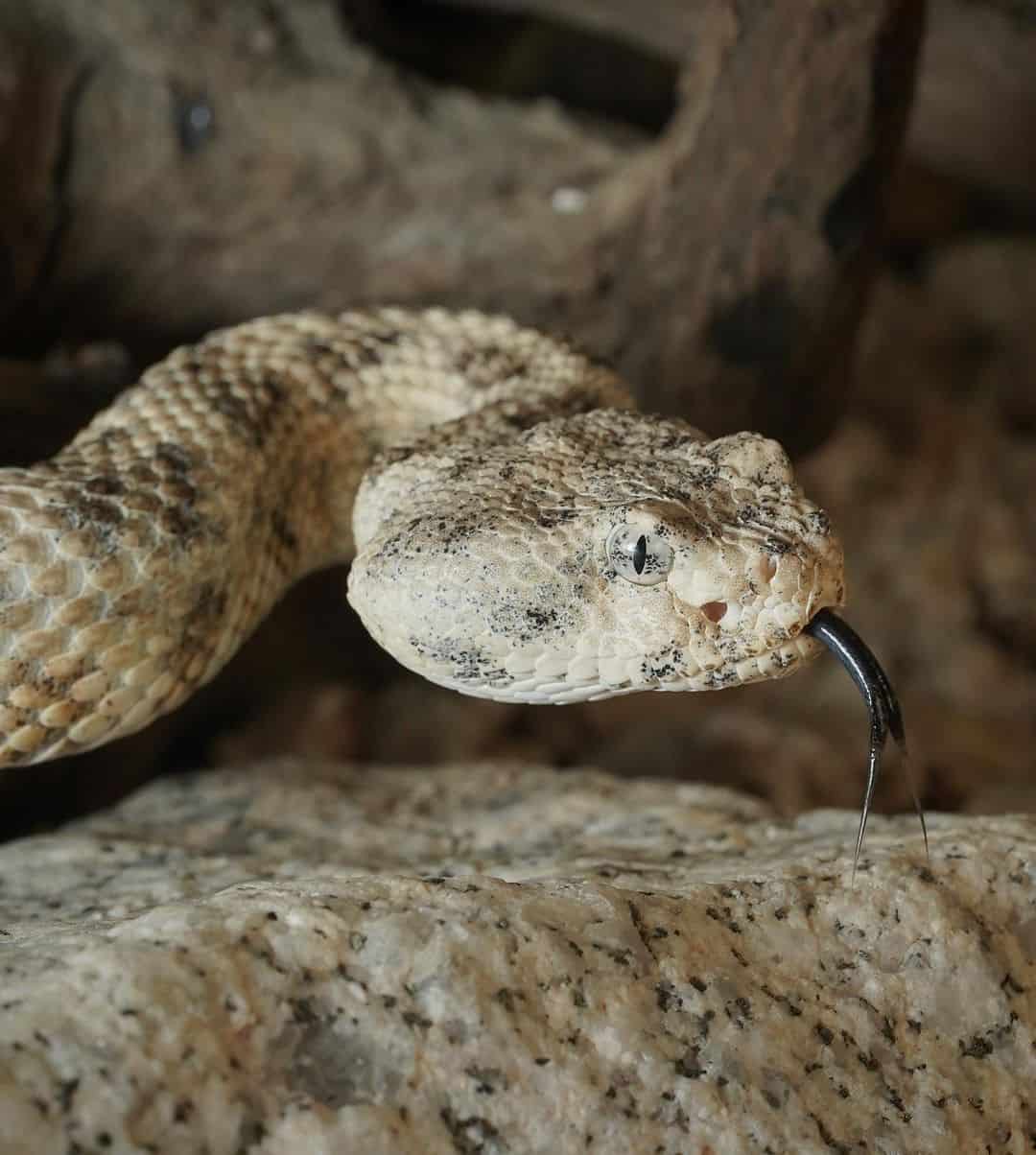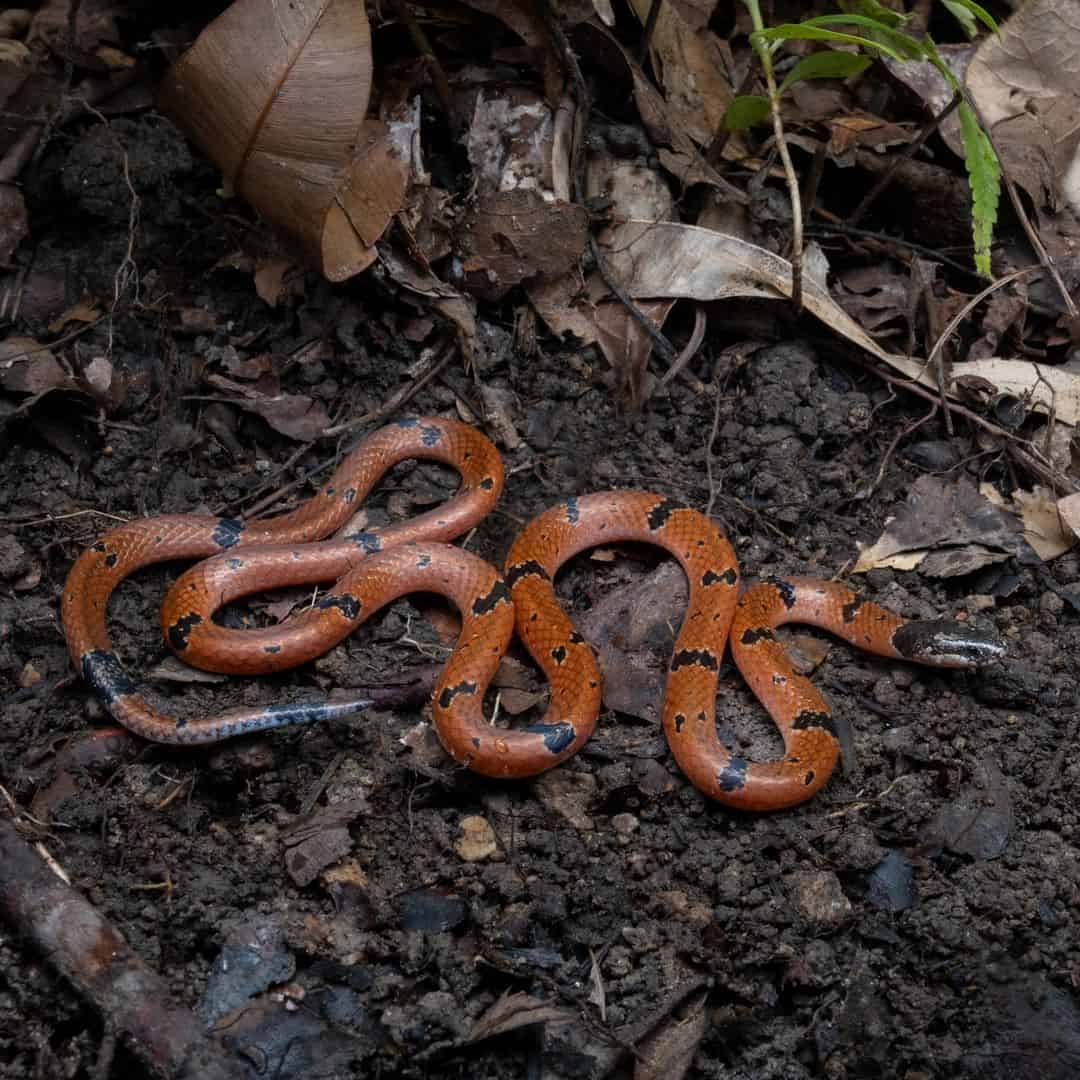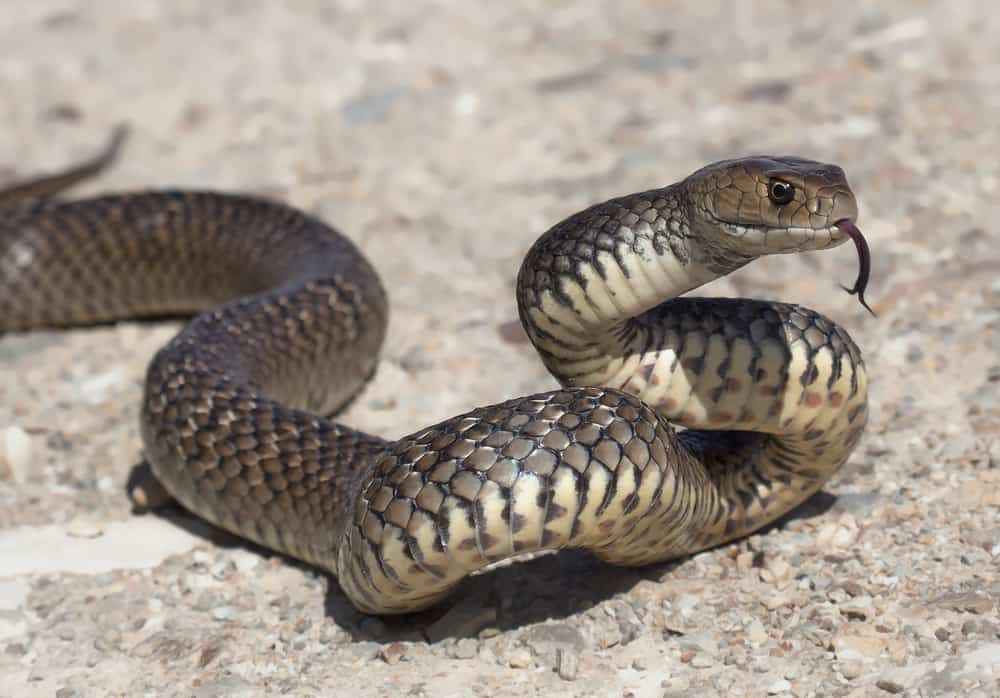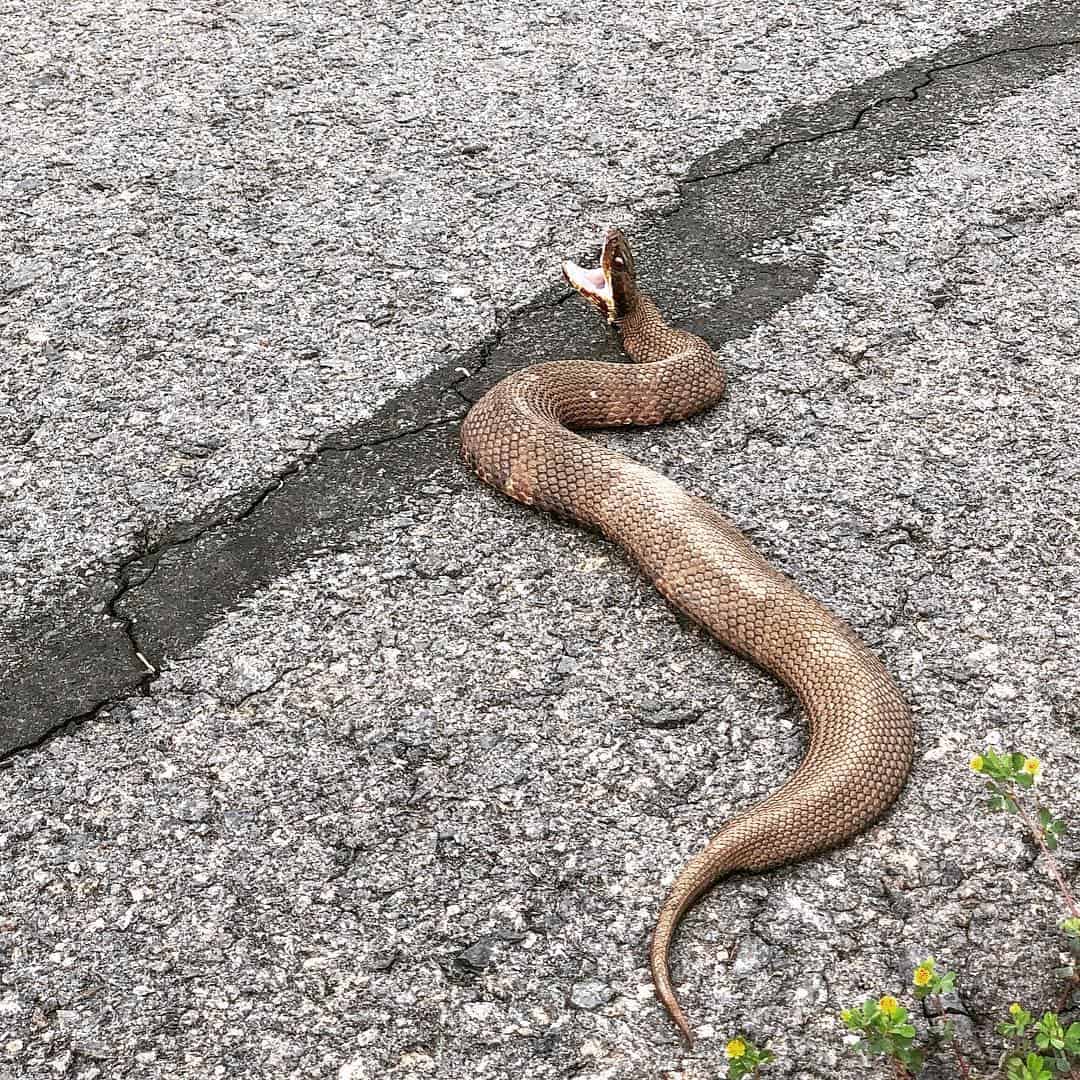Many people fear snakes, and for a good reason, since some species can be deadly. As a result, it’s essential to know how to determine whether or not a snake you spot is poisonous.
Fortunately, some visual identifiers can help you distinguish a harmless snake from a venomous one, but sometimes discerning between them isn’t easy because some non-poisonous have evolved to mimic some features of poisonous snakes for their protection.
In this post, we’ll go in-depth about how to tell if a snake is poisonous and provide several visual markers that can help you make an accurate determination.
Five Ways To Identify a Poisonous Snake
1. Shape
Many of us were made to believe that all venomous snakes have triangular heads. However, that’s just a myth and not always true. While a very high percentage of triangular-headed snakes are poisonous, plenty of other snakes with triangular heads are harmless.
A more distinct and accurate feature of venomous snakes is their large and broad head. For example, Rattlesnakes and puff adders have protruding venom glands that cause their heads to be larger than their necks.
These venomous snakes can also be identified by the pits (or holes) on their heads. Each snake has two pits on the tip of its snout, which they use to detect heat and find prey. (Examples of Pit vipers are; rattlesnakes, copperheads, and cottonmouths.).
2. Colors and Patterns
Another good indicator of a venomous snake is its color. The coral snake, for example, has a small round head, round pupils, and no pit on its head. But it is known for its vibrant pattern of red, yellow, and black stripes. And according to some experts, the more colorful the snake, the more cautious you should be.
However, relying solely on color to determine whether or not a snake is poisonous can lead you astray. This is because many snakes blend their color with that of their environment.
Also, some harmless snakes have been identified as having colorful patterns similar to poisonous snakes. For example, coral snakes (poisonous) and scarlet king snakes (non-venomous) have a pattern of yellow, brown, and black on their scales.
3. Eyes/Pupils
While coloring may not be effective enough to tell if a snake is poisonous. The eyes of a snake can provide a little bit more assurance.
Typically, venomous snakes have elliptical pupils like “cat eyes,” whereas most non-venomous snakes have round pupils. In particular, elliptical pupils are common to snakes such as copperheads and rattlesnakes. Venomous snakes also have a protruding “brow” and more vertical eyes than non-venomous snakes.

4. Fangs
Most poisonous snakes have two front folding fangs or small rear fangs, whereas non-venomous snakes will mostly have teeth and no fangs at all.
Also, venomous snake bites produce a two-dot puncture caused by the fangs, whereas non-venomous snake bites are usually circular. (Please, do not get too close to a snake to inspect its fangs.)
5. Behavior
If you come across a snake, you should always pay attention to how it behaves, as it can tell you a lot about the type of snake you’re dealing with. For example, venomous snakes are more defensive and ready to strike, whereas non-venomous snakes might be more skittish and try to escape.
They may also give warning signs to scare you away because they see you as a potential predator. For example, a common behavior of rattlesnakes is making a rattling noise. They do this by shaking the rattle at the end of their tail. On the other end, cobras will raise their head and sway back and forth while spitting out their venom. This is often known as the “cobra dance.”
When you notice these signs, ensure you stay away and call a snake expert to take care of the problem. However, not all snakes give warnings. For example, a black mamba or viper is naturally aggressive and will strike whenever they feel threatened.
Important Tip: Non-poisonous snakes have evolved to mimic these characteristics. So, it’s best to use a combination of physical and behavioral characteristics to tell if a snake is poisonous.
What To Do If You come Across a Poisonous Snake
If you encounter a poisonous snake, it is important to remain calm and avoid panic. Here are the Immediate steps to take:
- Keep a safe distance: Do not approach or try to handle the snake. Most snakes will try to avoid human contact, but if they feel threatened, they may attack.
- Leave the area: Slowly and calmly move away from the snake in the opposite direction. Do not turn your back on the snake or run away, as this can trigger its predatory instincts.
- Seek professional assistance: If the snake is in an area that threatens human safety, such as a residential area, it is best to contact a local animal control or a wildlife expert to handle the situation.
Image Credit: binoculaura
Common species of Poisonous Snakes
Poisonous snakes are common in the United States, with many species of Viperids and Elapids found across the country. According to stats from the CDC, the most commonly encountered poisonous snakes in the US.
1. Rattlesnakes
The most easily recognized poisonous snake is the rattlesnake. They are typically found in arid environments such as deserts and prairies. Rattlesnakes are also the largest venomous snake species in the United States. They can be identified by their rattle, which they use to make a loud sound before biting.
Rattlesnakes come in various colors, but the most common is black. They are also notoriously aggressive.
2. Moccasins
Cottonmouth snakes are another name for moccasins. They are most commonly found in moist environments such as swamps and marshes. They can also be identified by their large head and thick body and vary in color depending on their location. Cottonmouth snakes are typically aggressive and ready to strike.
3. Copperheads
Copperhead snakes have large triangular brown heads with two heat-sensing pits between their eyes and nostrils. They are found primarily in forested areas, dry and rocky hillsides, and suburban areas. Copperhead snakes are not typically aggressive, and their venom is less potent than other species.
4. Coral Snakes
Coral snakes are the smallest venomous snake species, but they are also the most dangerous and trickiest. This is because they lack the physical characteristics of most venomous snakes, such as triangular heads and heat-sensing pits.
Instead, they have a long venom gland that extends to their head rather than a different head from the body. However, a coral snake is easily distinguished by its colorful scale.
Coral snakes are mostly found in warm climates such as Florida or Texas. Beware of this snake when it raises its head and curls the tip of its tail; it’s a clear warning not to get any closer.

What to do when Bitten by a Poisonous Snake
It is critical to understand how to identify these species so that you can take the necessary precautions when encountering them. However, you also have to be prepared if you get bitten.
- If a poisonous snake has bitten you, seek medical attention immediately. Dial 911 or contact your local Emergency Medical Services [EMS]).
- You should not drive yourself to the hospital because snakebites can cause dizziness or passing out.
- Also, if possible, take a picture of the snake from a safe distance to assist the doctor in identifying the type of snake and administering the appropriate treatment.
However, if you cannot get to a hospital or clinic right away, there are some steps you can take at home to treat the bite and reduce the risk of serious complications until the medicals arrive.
- Stay calm and sit in a position where the bite area is below the heart level to slow the spread of venom.
- Take off rings, a watch, and any tight clothing before swelling begins.
- Clean the bite area with water and apply a clean, dry dressing to the bite spot.
- Write the time next to the leading edge of tenderness/swelling on the skin.
- Don’t apply a tourniquet or attempt to suck out the venom.
- Do not cut the bite area or apply ice.
Conclusion
Though there is no perfect way to tell if a snake is poisonous without being an expert, being aware of the most common characteristics of venomous snakes can reduce your risks and increase your chances of staying safe in the presence of such snakes.
To recap
- Learn the physical characteristics of poisonous snakes in your area, such as their color patterns and eye shape.
- Observe the snake’s behavior. Poisonous snakes are more likely to be aggressive and will often try to bite if they feel threatened.
- If you encounter a snake and are unsure if it is poisonous, keep a safe distance and avoid handling or approaching it.
When it comes to poisonous snakes, it’s better to be safe than sorry, So stay away! If you have more questions or concerns about identifying poisonous snakes, please leave a comment below.

